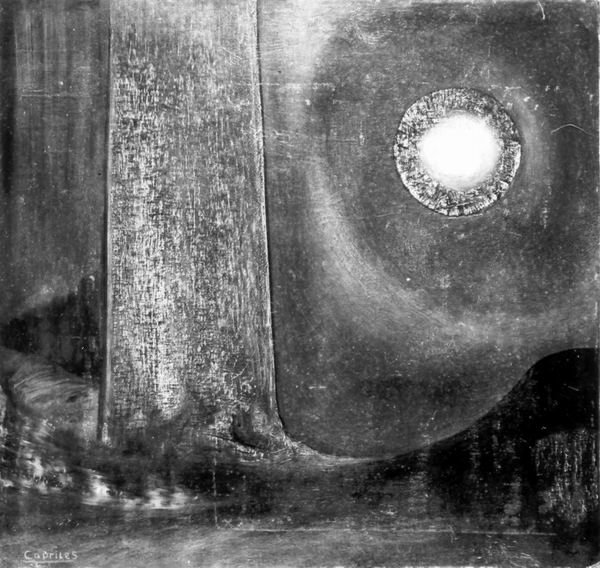
Moonlit Night
Department of Art after 1800
| Artist | |
|---|---|
| Culture | Italian |
| Date | 1930 |
| Object type | painting |
| Medium, technique | oil on canvas |
| Dimensions | 61 x 50 cm |
| Inventory number | 469.B |
| Collection | Department of Art after 1800 |
| On view | This artwork is not on display |
Severini initially taught himself by studying and copying the old masters of the Florentine Renaissance and later studied in Giacomo Balla’s studio under Umberto Boccioni. He settled in Paris in 1906 and met the leading figures of the emerging
avant-garde. He played an active part in starting the Italian avant-garde movement as one of the signers of the futurist manifesto in 1910, of which he became a foremost advocate. He connected the avant-garde groups in Paris and Italy thanks to his personal ties, and in his stylistic solutions he combined the montage technique of the French cubists with futurist experimentation with dynamic
movement.
In later years his style underwent significant change: the dynamism of his depictions gave way to a classicising tendency. At this time Severini was already an ardent spokesman of the classical tradition in his theoretical works too; in his
pictures he sought the possible expressions of monumentality. In the 1920s he received several commissions to paint murals, and produced frescos and mosaics too. He further developed the surface effect achieved with these techniques in his smaller panels, which is illustrated, for example, by his Still Life, executed in 1930. In this composition he placed seemingly mismatched objects next to each other.
The antique mask, the vase with a simple design, the pineapple, and the lobster are reminiscent of Mediterranean culture, as if the requisites of a lost civilisation had re-emerged in the fragment of an archaic find. Despite the enigmatic combination of the elements and the virtually fearful expression of the mask, the composition exudes timeless peace. After their radical ideals about art abated, many of the leading artists of the former futurist movement remained the main figures of Italian art in later decades, which brought about radical political change. Severini joined the Novecento group, founded in 1922, striving to preserve classical values and the formal ideals inherent in Italian tradition. He was awarded the grand prize at the Rome Quadrennial in 1935, where an entire room was devoted to his works. The selection of his newer works included Still Life, which was also displayed at the large-scale representative exhibition of Italian art organised in the Műcsarnok (Kunsthalle) in Budapest the next year. Miklós Horthy, Hungary’s governor at the time, purchased the picture from this show, and it later entered the collection of the Museum of Fine Arts.
Ferenc Tóth
Passuth, Krisztina – Pataki, Dénes, XX. századi művészet, Remekművek magyarországi gyűjteményekből/Meisterwerke aus ungarischen Sammlungen/Art treasures in Hungarian collections/Chefs d’oeuvre dans les collections hongroises, Corvina, Budapest, 1978.
Treasures from Budapest : European and Hungarian masterpieces from the Museum of Fine Arts, Budapest and the Hungarian National Gallery: Japan-Hungary friendship 150th anniversary: Exhibition at the National Arts Centre, Tokyo, on the 150th anniversary of the Japanese-Hungarian friendship 2019.12.04 – 2020.03.16., Nikkei Inc, Tokyo, 2019.
This record is subject to revision due to ongoing research.